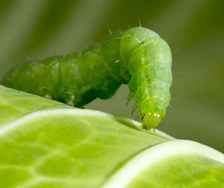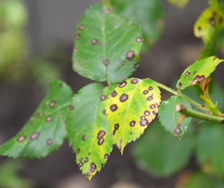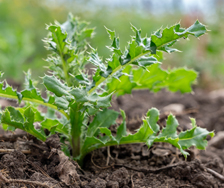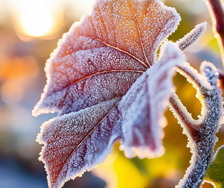Yates Account
Join now
Create a Yates account today!
Sign up to join the Yates Garden Club for monthly e-mails packed with seasonal inspiration, tips for success & exclusive promotions.
Plus if you’re a Garden Club member you can take part in the Yates Growing Community - a blog to share successes, get advice & win prizes in fun challenges along the way!

Forgot password
Enter the email address associated with your account, and we'll email you a new password.
Chamaepsila rosae

What is Carrot Rust Fly?
Carrot Rust Fly is a serious pest of carrots in the warmer parts of the country. This fly also has a liking for parsnips, celery and parsley. It stays active throughout most of the year, only slowing down during winter and early spring.
Adult flies locate their target crops using scent, then lay their eggs in the soil around the crops. White, cottony-looking maggots hatch out and begin to feed on the surface of the tap roots. As the maggots mature, they burrow further into the root to feed, causing a lot of damage. This damage often allows an entry point for bacterial rots to get started, which spoils the entire root for eating.
Symptoms
Yellowing, discoloured leaves, wilting or a generally stunted appearance to plant tops. Deep, unsightly tunnels or channels circling the outside of roots, filled with rusty-looking mush.

How to protect against Carrot Rust Fly
Physical barriers like fine garden mesh or windbreak cloth placed around your carrots prevent the adult flies from laying eggs near them. Make certain there aren’t any little gaps, as the flies can smell their way to your crops.
Carrot rust flies fly fairly close to the ground (up to about 50cm), so planting vulnerable vegies in higher raised beds is a commonly used method of prevention.
Regular crop rotation is a tried and tested method to suppress carrot rust fly.
Companion planting is also a popular control; you can interplant your carrots with masking plants that emit a strong odour, like onions, chives or garlic. These plants disguise the smell of the target plants, to confuse and deter carrot rust fly.
Sow carrot seed sparingly, so you don’t need to do much thinning. The scent of carrot seedlings being thinned out will attract carrot rust flies like a magnet!
Plants impacted
- Carrots
- Parsnips
- Celery
- Celeriac
- Parsley
- Fennel
- Dill
- Coriander
- Chervil















Share
Share this article on social media